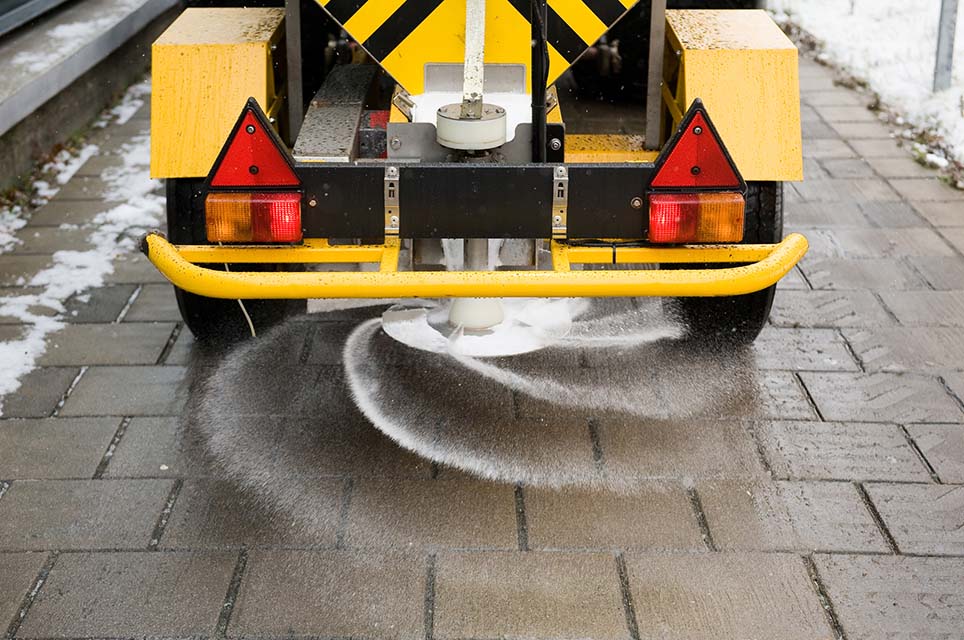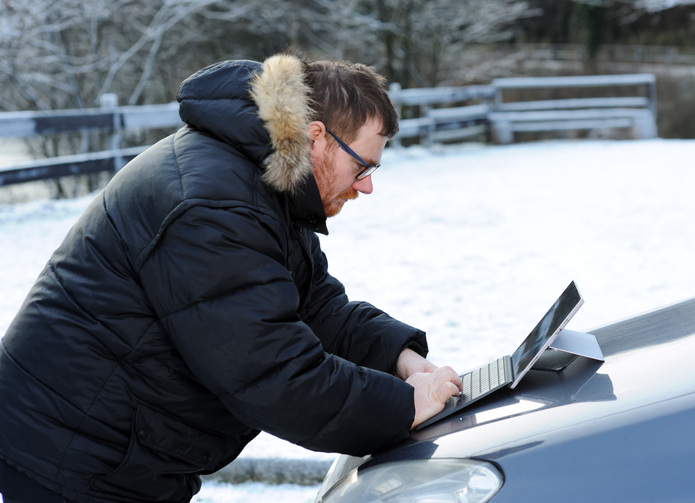Comparing Deicing Agents for Commercial Properties

Which deicing agents are most effective? In our experience, there’s no single “best” deicer for every business or situation. Use our convenient comparison chart to understand the most common deicing agents and how they work to make the best choice for your snow and ice removal needs. Most importantly, you’ll want to have a safe environment for clients, guests and employees this winter.
Trust Chain Store Maintenance for
Reliable, Immediate Commercial Property Services

Which Deicing Agent Is Right for Your Business?
| DEICING AGENT | WHAT IT DOES | PROS | CONS | BEST FOR |
| Salt (sodium chloride/rock salt, calcium chloride, and calcium magnesium) | Sodium chloride lowers the freezing point for water to 20 degrees. Magnesium chloride is effective in temps as low as -13 degrees while calcium chloride can still be effective when the temp dips to -25. | Easy to source and apply. Sodium chloride is relatively inexpensive. Can decrease slips and falls by keeping pathways clear of ice. |
Calcium chloride and calcium magnesium are typically more expensive. Not environmentally friendly and can be harmful to plants, animals and waterways. |
Parking lots and sidewalks, but before ice has had a chance to form or after snow is cleared to stop it from freezing again. |
| Brine (water and salt mixture) | Works proactively to melt ice. | Can be applied as an anti-icer, before any precipitation has occurred. | Same/similar to salt, plus it can make surfaces more slippery if temperatures are too cold for it to work when it is applied. | Sidewalks or other high-traffic areas |
| Sand | Works to provide traction vs. melting ice. | Enables traction when temps are too cold to melt ice with salt. Less likely to damage surfaces like concrete. Environmentally friendly. |
Doesn’t melt/remove ice. Can be more expensive as well as require more cleanup during and after the season to keep your site well-groomed. |
When traction is needed—such as in parking lots and on long driveways and roads—and when it’s too cold for salt to be effective. |
| Urea | May use down to 12 degrees, although becomes less effective under 25 degrees. | As an organic compound, it is fairly organically friendly (especially to grass). | Overuse can still cause issues with vegetation. Can cost up to 10x more than salt. Breaks down quickly so may require more frequent re-treatment. |
Sidewalks or other high-traffic areas. |
| Acetates (Potassium acetate, calcium magnesium acetate) | Potassium acetate works down to -26 degrees. Calcium magnesium acetate turns snow and ice to slush, preventing it from bonding to the pavement. |
Potassium acetate is biodegradable and non-corrosive to metal and concrete. Calcium magnesium acetate works great for pre-treatment. It is not very damaging to soil, vegetation, metal or concrete. |
Both acetates are expensive and can require a large amount to get the desired results. | Treating large areas or for properties with extensive landscaping where potentially damaging foliage is a concern. |
Cost & Budget Considerations
Cost consideration is an important factor when selecting deicing methods for commercial properties. Balancing upfront investments against long-term savings and operational costs is key to your decision-making process. While rock salt is less expensive upfront, the potential environmental and property damages can create higher costs over time. More expensive options like calcium chloride may offer cost savings in the long run due to increased efficiency and less environmental impact.
When budgeting for deicing, be sure to consider the cost of materials and equipment as well as the potential for reduced liability from slips and falls. You and your snow provider should also evaluate the price of de-icing materials, which can vary seasonally and by region.
When undertaking a cost analysis, consider both direct and indirect costs to make an informed decision. This analysis should factor in the size of the area to be de-iced, the typical weather conditions and the frequency of application required. Work with your snow and ice partner on a realistic budget to help prevent any surprises when winter weather hits.
RELATED: Snow Removal Checklist: 7 Items to Ensure a Successful Snow Season
Know Your Local Rules
Some municipalities use both sand and salt for snow and ice removal, and many use a mixture of the two. Before selecting a deicer for your business, be sure to have your snow and ice partner confirm which agents are approved for use in your local area.
Partner with Chain Store Maintenance for Snow & Ice Removal Success
The most effective way to remove ice and snow is to act fast—before conditions worsen. Looking for a trusted snow and ice removal partner for your business? To find out how the team at Chain Store Maintenance - an MCS Company, can work with you to meet your commercial snow removal needs and to request a quote, contact your Chain Store account representative or email CSMsales@ChainStore.com today.
DOWNLOAD: 'WHICH DEICING AGENT IS RIGHT FOR YOUR BUSINESS'? PDF >>



